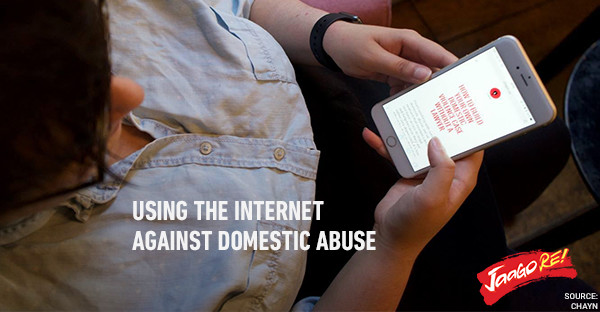7 ways the Internet can help victims of domestic abuse

About once every five minutes, domestic violence is reported by a woman in India - one of the highest incidence rates in the world. Contrary to popular belief, domestic violence does not only occur in “poor” families or in minority communities – it happens all around us. However, thanks to the prevalence of the internet, smartphones and tablets, modern Indian women can connect to the outside world and escape the hardships their mothers endured. Here are seven ways the internet is helping female victims of domestic abuse:
1. To find out if they are being abused
In a country where marital rape is legal, most women do not realise that the cruelty they are experiencing is actually abuse. By accessing websites, blogs, and forums dedicated to domestic violence and reading stories by other women, they will come to recognise the signs and symptoms of abuse.
2. To make sense of what is happening to them
The effects of domestic violence extend beyond physical attacks; mental health issues such as depression and Posttraumatic Stress Disorder are common among survivors. In a different vein, many women think something is wrong with them if they still have feelings of love and affection for their abuser – this is a symptom of Stockholm Syndrome and is totally normal.
3. To ensure the well-being and happiness of their children
One of the most common questions asked by women facing domestic violence online is whether the violence and abuse at home will affect their children. Now, with the use of technology, not only can women find the information they need to ensure their children are safe, they can also talk with other mothers in the same situation.
4. To become informed about the options available to them
Whether you choose to stay or leave, it is important to know your options and the risks they present. Information on everything from nearby shelters to educational opportunities to job prospects are easily available through the web, and can empower a woman to leave an abusive situation.
5. To learn how to stay safe, whether they are still at home or after they have left their abuser
Safety is of utmost importance for the survivor of an abusive relationship as severe injuries or even death are a possibility for them. Women can learn how to cover their tracks online and offline from security experts to ensure their abuser cannot find them after they have left.
6. To access tools that will help them build a case against their abuser and get justice
Information on Indian divorce laws, domestic violence acts, and women's rights laws is often difficult to understand and time-consuming to look through. Chayn’s How To Build Your Own Domestic Violence Case Without A Lawyer will help and guide you on how to report a case about abuse if you do not have enough resources for legal counselling.
This means that the abusers are punished as per the law, and the victim is granted a divorce, child custody or asylum.
7. To access and partake in a support system
Technology allows women to connect with other women who have experienced domestic violence in the same ways that they have. They learn that they are not alone, and platforms such as Facebook create safe, nurturing groups for women to discuss what they are going through and support each other.
***
Click here to find out about Chayn India
***
About the Author:
Disclaimer:
Views expressed here are of the author alone and do not necessarily represent that of the brand.
Share this story on






